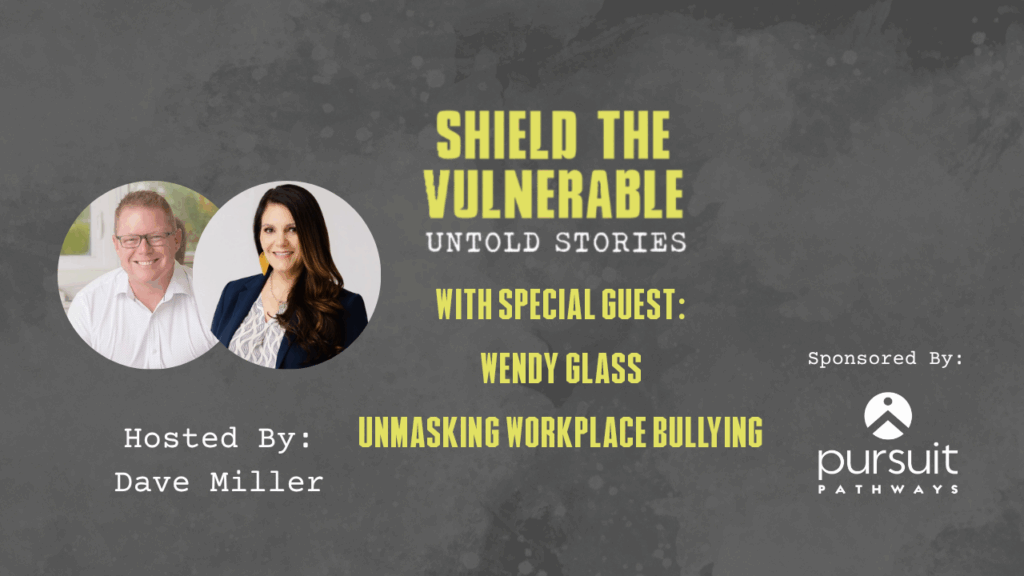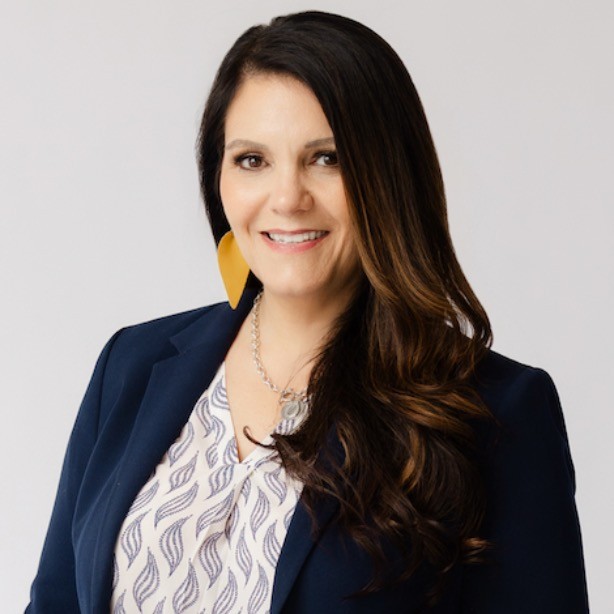Shield The Vulnerable: Untold Stories Unmasking Workplace Bullying

Workplace bullying and violence are significant issues that impact staff well-being, patient safety, and organizational trust. Despite their prevalence, these problems are often overlooked or minimized within professional environments. In the latest episode of Shield the Vulnerable: Untold Stories, Wendy Glass shares her expertise on the hidden impact of “lateral violence” in the healthcare sector, the transformative principles of Just Culture, and firsthand accounts that highlight the pressing need for change.
The Prevalence of Workplace Bullying Workplace bullying, particularly in healthcare settings, is both widespread and underreported. Instances of peer-to-peer bullying—commonly referred to as “lateral violence”—occur across various departments and roles. Studies indicate that up to 85% of healthcare workers have experienced this form of violence, while 93% have witnessed it firsthand. These behaviors, ranging from subtle gossip to outright hostility, frequently go unaddressed due to a lack of awareness or clear documentation.
The Impact on the Work Environment
The impact on the work environment is profound. When bullying behaviors are left unchallenged, they contribute to a culture of fear and distrust. This, in turn, affects team cohesion, staff retention, and ultimately patient care. Addressing workplace bullying is not merely a human resources responsibility but a critical component of fostering a safe and productive organizational culture.
Understanding Lateral Violence
Lateral violence refers to bullying behaviors among colleagues of similar professional standing. Unlike hierarchical bullying, which may involve superiors exerting power over subordinates, lateral violence manifests as peer-to-peer conflict. It can include verbal abuse, undermining professional credibility, spreading rumors, and exclusion from team activities.
Wendy Glass shared an experience of encountering lateral violence early in her career. Upon being asked to address bullying within her team, she initially dismissed the severity of the issue, associating bullying solely with childhood behavior. However, as instances of peer conflict and intimidation became more apparent, she realized the pervasive and damaging nature of lateral violence within the workplace.
Addressing Workplace Bullying Through Just Culture
One effective framework for addressing workplace bullying is the Just Culture model. This approach emphasizes accountability without resorting to blame, distinguishing between human error, at-risk behavior, and reckless conduct. Rather than assigning fault immediately, Just Culture encourages organizations to examine whether an incident was the result of individual negligence or systemic failure.
This shift from punitive responses to constructive analysis helps create an environment where employees feel safe to report issues without fear of retribution. As a result, organizations can address the root causes of behavioral issues rather than merely addressing the symptoms.
Implementing Practical Solutions
To effectively reduce instances of workplace bullying, organizations can adopt the following strategies:
- Training and Education: Conduct training sessions that clearly define workplace bullying and lateral violence, emphasizing that such behaviors are unacceptable in any professional setting.
- Establishing Reporting Mechanisms: Implement clear and confidential processes for reporting bullying incidents. Ensure that employees feel safe to voice their concerns without fear of retaliation.
- Adopting the Stoplight Report System: This tool facilitates transparent communication between managers and team members. During one-on-one meetings, employees categorize their updates as follows:
- Green: Tasks and goals successfully achieved.
- Yellow: Areas that are in progress or require improvement.
- Red: Obstacles that hinder progress, along with the reasons behind them.
By encouraging open dialogue, the stoplight report helps identify problems before they escalate, fostering a culture of proactive problem-solving.
Conclusion
Addressing workplace bullying is essential for maintaining a safe, respectful, and efficient work environment. By adopting frameworks like Just Culture and implementing practical strategies such as the stoplight report system, healthcare organizations can begin to dismantle the systemic issues that allow lateral violence to persist.
Promoting awareness, facilitating open communication, and fostering a culture of accountability will enable organizations to better support their employees and ensure a healthier work environment. Through initiatives like Shield the Vulnerable: Untold Stories, it becomes possible to unmask these challenges and work toward a more respectful and supportive workplace.
About Wendy Glass
Wendy Glass is a seasoned Healthcare Leadership Advocate and Workplace Safety Specialist dedicated to transforming healthcare environments through accountability, safety, and employee empowerment. With over two decades of experience in healthcare settings, Wendy has witnessed firsthand the damaging impact of workplace bullying and lateral violence on team cohesion, staff retention, and patient care.
Her work is driven by a commitment to creating safe, transparent, and resilient workplaces. As the founder of initiatives focused on unmasking and addressing lateral violence, Wendy emphasizes the importance of psychological safety and open communication. She is a strong proponent of the Just Culture model, a framework that shifts the focus from blame to learning, encouraging organizations to address systemic failures rather than solely individual errors.
Wendy also champions practical, hands-on solutions such as the Stoplight Report System, which facilitates transparent communication between managers and team members, helping to identify challenges before they escalate. Her approach empowers healthcare organizations to foster respectful, supportive, and high-performing work environments.
Wendy continues to lead with purpose and passion, equipping healthcare professionals with the tools and strategies needed to cultivate a culture of safety, trust, and collaboration.

